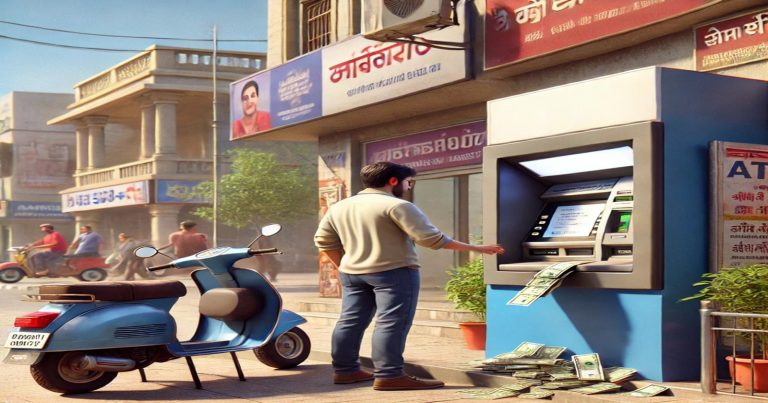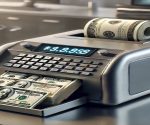Cash withdrawal refers to removing physical cash from your bank account. This can be done at an ATM, a bank counter, an AEPS service point, or even with a credit card. We only use cash for our needs; we use cash to buy vegetables, pay small vendors, cover travel expenses, etc. Hence, all about cash withdrawal is something that keeps you in the right place for managing your money. Cash withdrawal means taking out your money from your bank account. While this may seem quite simple, there would be dozens of rules and latency charges associated with it. Now, no matter whether you use the ATM card, visit the bank, or try to withdraw cash from online gaming wallets, you need to comply with certain limits and regulations. Such as limits on how much you can withdraw from an ATM in a day. Also, if you withdraw a substantial amount of cash during a financial year, then TDS on cash withdrawal can be deducted by the government. People also withdraw money from online wallets, apps, and even cash withdrawal games. It will help you to know how you can also withdraw cash from credit card safely without paying high charges.
What is Cash Withdrawal?
Cash withdrawal refers to the withdrawal of money from your bank account or any wallet in the form of cash. You can do it via a bank, ATM, AEPS point or even apps. Students, workers, business people, homemakers, everyone withdraws cash. You’ll likely need cash for things like groceries, treats or transport. Despite the rise of digital payments, cash remains essential. So, you should know the right and wise way to withdraw money from your account.
Methods of Cash Withdrawal
Withdrawing cash is easy, but you need to know the best way for your needs. Whatever next to take care of charges and rules. There is more than one way to cash out. Each has rules and charges. Let’s look at them:
- ATM Cash Withdrawal: You put in your debit card, you put in your PIN, and you withdraw cash. A majority of the ATMs provide 4-5 free in a month.
- Bank Cash Withdrawal: You visit your bank, drop the withdrawal slip or cheque, and receive the cash from the counter.
- AEPS Cash Withdrawal: It is called Aadhaar Enabled Payment System. You only present your Aadhaar number and your fingerprint at a micro ATM point, and the money comes out of your account.
- Credit Card Cash Withdrawal: You can withdraw cash from your credit card, but there are withdrawal fees and a high-interest charge associated with it.
- Online Game Cash Withdrawal: There are real cash withdrawal games that allow you to withdraw the money won in your bank. In addition, this requires linking your bank or wallet.
Cash Withdrawal Limit from Bank and ATM
Withdrawals from ATMs and banks are limited. These have been put in place for your safety and to prevent misuse. Each bank sets its own limits depending on the kind of account, card, etc. RBI also provides specific guidelines.
ATM Cash Withdrawal Limit
There is usually a limit on the daily ATM withdrawal for most savings accounts. These limits are determined by type of card (classic, platinum). Post free withdrawal, each withdrawal attracts a charge between ₹20 to ₹25 per withdrawal by banks.
| Bank Name | Daily Limit (₹) | Free Transactions per Month |
| SBI | ₹20,000 to ₹50,000 | 5 (in metro cities) |
| HDFC Bank | ₹25,000 to ₹1,00,000 | 5 (for savings account) |
| ICICI Bank | ₹25,000 to ₹75,000 | 5 |
| Axis Bank | ₹40,000 to ₹1,00,000 | 5 |
Cash Withdrawal Limit from Bank
Cash withdrawal limit from bank refers to the maximum amount you can take out in cash from your bank account in a day. This limit depends on your account type, bank policies, and whether you visit your home branch or a non-home branch. Banks set these limits to ensure security, manage liquidity, and follow RBI guidelines.
- Keep in mind, the cash withdrawal limit from bank also depends on your account type and purpose.
- From your home branch you can withdraw any amount.
- In non-home branches some banks allow cash withdrawal of only ₹25,000 per day.
- If you make large withdrawals, you are required to keep ID proof.
TDS on Cash Withdrawal
TDS is the abbreviation for Tax Deducted at Source. TDS on cash withdrawal is a tax which the bank deducts to withdraw cash from your account in a year. This rule was introduced by the government to curb black money and promote digital payments. If the annual cash withdrawals you make exceed specific slabs, the bank withholds a percentage as TDS from your withdrawal before handing over the cash to you. This is especially true for those who fail to file their income tax returns. By knowing how TDS on cash withdrawal works, you can plan your finances better and avoid any surprises when it comes to TDS deductions. The government wants to curb large cash transactions. Thus, they brought TDS on cash withdrawal.
Where Does TDS Apply on Cash Withdrawal?
- 2% TDS is deducted by the banks if you withdraw more than ₹1 crore in a financial year.
- TDS of 2% must be deducted if you have not filed your ITR for the last 3 years and your withdrawal is over ₹20 lakh.
- In such scenarios, for withdrawals over ₹1 crore, TDS rises to 5%.
Let’s take an example:
So, say you withdraw ₹1.2 crore in 1 year, the bank will deduct ₹40,000 as TDS (2% of ₹20 lakh that is above limit).
Who Does This Apply To?
- Individuals
- Businessmen
- Companies
So as much as possible keep an eye on your withdrawals so you don’t suddenly get deducted.
How to Withdraw Cash from Credit Card?
You can withdraw cash using your credit card. However, you have to be extremely cautious as it is more costly than debit cards. Withdraw cash from an ATM with your credit card like a debit card. But it’s a process that will accrue high fees and interest charges. Unlike normal purchases, cash withdrawals using credit card do not have an interest-free period. Hence, it is important to know the right steps and to be aware of the charges. If used with caution, this option can rescue you in times of need but you will not be trapped in a debt lake.
Steps to Withdraw Cash from Credit Card
- All you need to do is find an ATM that accepts your card.
- Insert your credit card.
- Select “Credit Card,” then put in PIN.
- Just enter the amount and withdraw cash.
- Credit Card Cash Withdrawal Charges
- Most banks will levy a transaction fee that is about 2.5 to 3% of the amount.
- Interest starts from day one. So there is no free period for this.
Some banks may also levy a nominal charge of ₹300–₹500 per transaction. For instance, if you withdraw ₹10,000, you would end up paying ₹500–₹800 (total charges) if you do not pay back quickly.
AEPS Cash Withdrawal
Aadhaar Enabled Payment System is the Fullform of AEPS. You do not need an ATM card to withdraw cash. One only need to link their Aadhaar number with their bank. AEPS cash withdrawal is an easy and safe method of withdrawing cash which uses your Aadhaar number and fingerprint. And you do not need an ATM card or PIN for this. It operates through the Aadhaar Enabled Payment System, especially in rural and remote areas. You then visit the nearest AEPS point, provide your Aadhaar number linked to your bank, and the money will be released to you based on biometric verification. The process is particularly useful for individuals who don’t have either ATMs, or smartphones, which makes banking services more efficient and accessible.
How AEPS Cash Withdrawal Works?
- Go-to AEPS point (Often found in villages and towns)
- Provide your Aadhaar number and the name of your bank.
- Provide your fingerprint to confirm.
- Input the amount, and get cash.
Benefits of AEPS Cash Withdrawal
Cash withdrawal offers quick access to physical money for daily needs. It helps manage spending, provides convenience in emergencies, and supports transactions where digital payments aren’t accepted.
- AEPS is also beneficial for rural users who cannot access ATM.
- No card or PIN needed.
- Works even in remote areas.
- Safe and simple.
- No additional cost for a limited number of pages.
Online Game Cash Withdrawal & Real Cash Withdrawal Games
There are many folks playing games offering real money rewards. These are known as real cash withdrawal games. If you win matches or complete tasks you can make money. Then, you can transfer money to your bank using online game cash withdrawal.
Steps for Online Game Cash Withdrawal
- Win money in the app or game.
- Go to the withdrawal section.
- Connect your bank or Paytm or UPI account.
- Enter the amount and confirm.
- Popular Real Cash Withdrawal Games
These games might charge processing fees while withdrawing cash. Finally, always check if the game is legal and within the rules in your state.
- Dream11
- MPL
- WinZO
- RummyCircle
Charges Related to Cash Withdrawals
Every time you withdraw cash, it may come with surprise hidden or visible cost. You should know these so there are no surprises. Cash withdrawal-related charges depend on how and where you withdraw the cash. Each method — an ATM, bank branch or credit card has a cost. ATM fees are charged after free transactions at banks, and credit cards charge high rates of service charge and interest. AEPS withdrawals remain free up to a certain limit. Understanding these fees can save you money and allow you to better allocate funds. Check with your bank for current withdrawal fees before you withdraw the funds.
Common Charges
- ATM Withdrawal: First five are free, five at bank ATMs, but thereafter charge ₹20–₹25
- Credit Card Cash Withdrawal Fee: Up to 3% + interest from day one
- Non-Home Branch Charge: Some banks charge ₹100–₹150.
- TDS: If limits as per rules are crossed.
Always inquire with your bank about all fees associated with your card or your account.
Relevance to ACCA Syllabus
The relevant papers of ACCA where cash withdrawal is applicable are Audit & Assurance (AA), Financial Reporting (FR) and Financial Management (FM). Internal controls, fraud prevention issues, cash flow reporting (under IAS 7) and bank reconciliation processes would be key areas for both theoretical and practical exam questions.
Cash Withdrawal ACCA Question
Q1: What standard covers cash outflow classification cash withdrawal?
A. IAS 1
B. IAS 10
C. IAS 7
D. IFRS 15
Answer: C
Q2: Which control is most effective at preventing fraudulent petty cash withdrawals?
A. Monthly reconciliations
B. Single signature authority
C. Two-party authorization for withdrawals
D. Unrestricted access
Answer: C
Q3: A cash withdrawal done but not yet posted into the books is a:
A. Bank error
B. Timing difference
C. Unpresented cheque
D. Suspense item
Answer: B
Q4: Frequent unauthorized cash withdrawals could be a sign of a failure in:
A. Budgeting
B. Internal control system
C. Marketing strategy
D. Sales return policy
Answer: B
Q5: What is the journal entry of Cash withdrawn from bank to pay rent?
A. Dr Rent Expense, Cr Bank
B. Dr Bank, Cr Rent Expense
C. Dr Cash, Cr Rent Expense
D. Dr Rent Payable, Cr Cash
Answer: A
Relevance to US CMA Syllabus
A cash withdrawal in US CMA exams relates to topics like working capital management, cash budgeting, liquidity planning, as well as internal controls over assets. This correlates to Part 1 (Financial Planning, Performance and Analytics) and is pivotal when assessing decisions made in the short-term as they pertain to financial markets or business partnership level agreements.
Cash Withdrawal US CMA Questions
Q1: How do large cash withdrawals affect working capital?
A. Increases liabilities
B. Improves asset turnover
C. Reduces cash balance
D. Enhances liquidity
Answer: C
Q2: In budgeting in terms of regular cash withdrawals which are not planned:
A. Overhead costing
B. Fixed assets
C. Accuracy of cash flow forecasts
D. Capital structure
Answer: C
Q3: What budget should cash withdrawal for emergencies be recorded under?
A. Sales budget
B. Master budget
C. Contingency budget
D. Capital budget
Answer: C
Q4: To track unauthorized cash withdrawals, the best tool that can be used is:
A. Variance analysis
B. Payback method
C. Cash receipts log
D. KPI dashboard
Answer: A
Q5: High frequency of cash withdrawals may trigger:
A. Profit margin
B. Inventory turnover
C. Liquidity ratio
D. Amortization schedule
Answer: C
Relevance to US CPA Syllabus
In US CPA Syllabus under topics AUD, FAR, and REG, Cash withdrawal tests on internal control framework (COSO), fraud detection, tax treatment of huge withdrawals (TDS), and reconciliation are key topics.
Cash Withdrawal US CPA Questions
Q1: Which of the following is considered part of internal control over cash withdrawals?
A. Granting full access to cashiers
B. Using prenumbered vouchers
C. Ignoring daily records
D. Decentralizing approvals
Answer: B
Q2: Owners can take money out of the company, likely categorized as:
A. Operating expense
B. Owner’s draw
C. Deferred income
D. Intangible asset
Answer: B
Q3: TDS on Cash Withdrawal when Annual Withdrawal Amount Exceeds
A. $10,000
B. $50,000
C. $1,00,000
D. $1,00,00,000
Answer: D
Q4: At audit, unauthorized cash withdrawals would be most likely to feature in:
A. Accounts payable ledger
B. Cash disbursement journal
C. Payroll records
D. Journal Entry for Accrued Expenses
Answer: B
Q5: Cash withdrawn must be disclosed as per GAAP in:
A. Prospective statement of financial position
B. Cash flow statement
C. Retained earnings statement
D. Income statement
Answer: B
Relevance to CFA Syllabus
CFA (especially in Level I & II) Cash withdrawal is examined in cash flow statements, liquidity analysis, financial reports quality, and risk assessment. Frequent cash outflows for corporate-governance purposes can complicate the valuation models that analysts use to predict market behavior.
Cash Withdrawal CFA Questions
Q1: Stringent cash withdrawals in a firm is a cause for concern in:
A. Dividend policy
B. Operating leverage
C. Forensic accounting
D. ROE calculation
Answer: C
Q2: Cash withdrawn shown under financing activities most likely means:
A. Owner draw or dividend
B. Purchase of inventory
C. Sale of fixed asset
D. Loan interest payment
Answer: A
Q3: In which ratio does frequent cash withdrawals directly affect?
A. Return on Equity
B. Current Ratio
C. Interest Coverage Ratio
D. Earnings Per Share
Answer: B
Q4: Which financial statement shows the cash taken by the director of the company for personal use?
A. Income statement
B. Balance sheet
C. Statement of cash flows
D. Notes to financials
Answer: C
Q5: How would investors react if a company displayed significant cash outflows with ambiguous explanation?
A. Buy more shares
B. Accept higher dividends
C. Question governance
D. Pattern out debt restructuring
Answer: C


